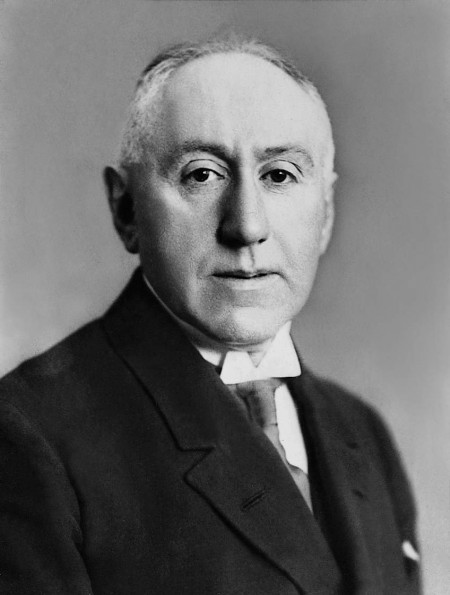6 November 1874, Budapest - 24 September 1958, Montreal
Arnold Székely wanted to be a lawyer originally although later he chose musical profession: he started his piano studies at the Academy of Music as a student of István Thomán in 1898. He met Béla Bartók there - who was seven years younger than him – although they did not develop a closer relationship; they taught in classrooms facing each other and shared the same teachers' room at the time of their professorship at the Academy. The last one of Bartók's Op.6 bagatelles (Valse) was premiered by Arnold Székely in December, 1908. Székely also completed piano teachers' training studies with Kálmán Chován during his last academic year with István Thomán in 1900/1901. After the completion of his studies at the Academy of Music he found a great master at German territory for perfecting his knowledge: he became a student of Ferruccio Busoni in Berlin.
He returned to his home country in 1905 and was soon appointed to be a teacher of the Academy of Music. The following entry can be read in the 1906/1907 yearbook of the institution: ‘In the month of December of this academic year István Thomán teacher asked for his retirement because of his serious illness due to the overstressed work of the years [...]for his department the minister of religious and public education affairs appointed Béla Bartók, a former exceptionally talented student of the institution and an artist of a distinguished name by today to lead the academic courses; and to fill his lessons at the preparatory courses he appointed Arnold Székely also a former outstanding student of our institution and graduate teacher. Both of them were students of Thomán [...]'. The preparatory courses were introduced by Ödön Mihalovich with the aim to provide such a training for the candidates which enable them to meet the required standards of the audition at the Academy of Music, instead of the uneven musical education of the rapidly spreading private music schools by which they also ensured the unified standards of the classes at the Academy. The professor of Székely, István Thomán had been also contracted for this aim by Ödön Mihalovich in 1888 already. Neither Thomán nor Arnold Székely spent their long teaching careers in its entirety by educating preparatory classes: he taught methodology besides piano instruction and served as leader of the piano teachers' training institution between 1920 and 1939. He retired from the Academy of Music in 1939 but he did not quit his pedagogical activity then at age 65: he worked as a teacher of the reputable Fodor Music School in the 1940s.
He less and less found his place at the post- World War II. Hungary, he gave a pedagogical lecture in Paris in 1948 and moved to Canada in 1951 definitively. He continued teaching tirelessly despite of his high age; furthermore he appeared as a performer, as well.
The evidence of his outstanding life achievement as a teacher is the list of the names of his former students, among which we can find such names as Annie Fischer, Andor Földes, György Kósa, György Solti, Lajos Kentner or Anta Doráti. The Academy of Music lost one of its most significant teacher personalities indeed, as Aladár Tóth put it about Székely in his
appraisement, written in 1939:
„Our Academy of Music have lost and outstanding pedagogical value: after 35 years of work retired Arnold Székely, the extraordinary pianist and teacher, leader of the pianist teachers' training college. Arnold Székely got to the concert stage then to the teacher's chair from the classroom of István Thomán. Not only was he a worthy pupil of the great master of the Hungarian piano education but his truest successor in his spirit and style: since the retirement of Thomán the greatest successes of our academic piano teaching were undoubtedly tied to the name of Arnold Székely. [...] We do not know a piano pedagogue – except for István Thomán – who recognizes the talent already as a bud, the quantity, the quality and specific gravity of it with such an infallible quick-sightedness as Arnold
Székely [...] Most of the >>child prodigies<< were his discoveries and got under his guidance through a generation, but at the same time he gave the most wonderful example of the pedagogic patience: he could always wait and get the timing of the true and richest harvest right. His discoveries were not intended for the general public but for the art."
R. Zs.



